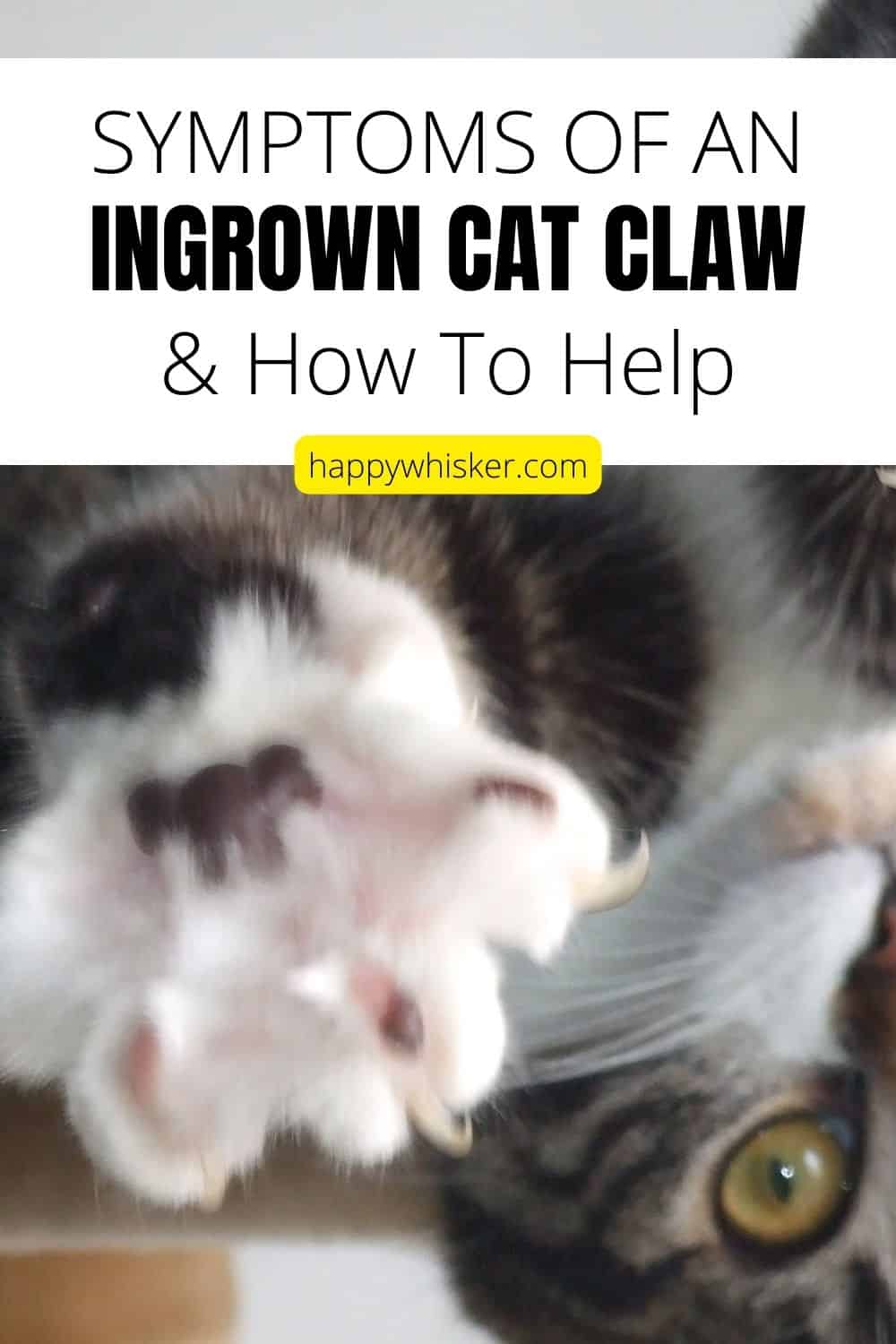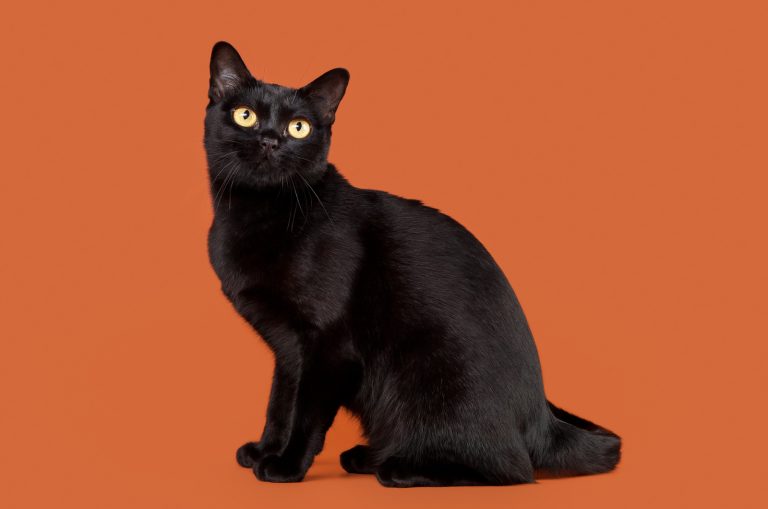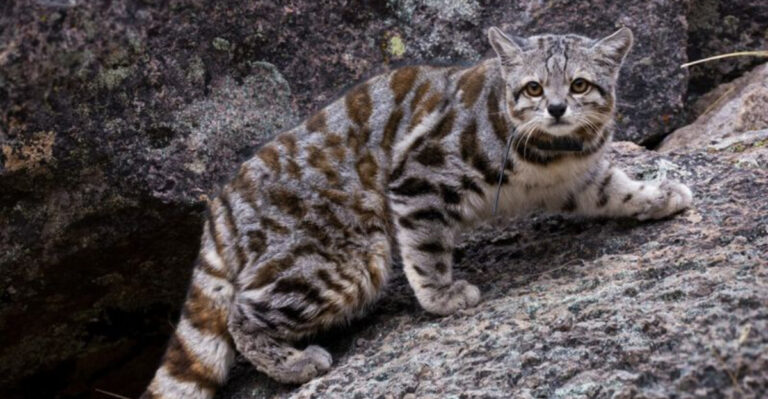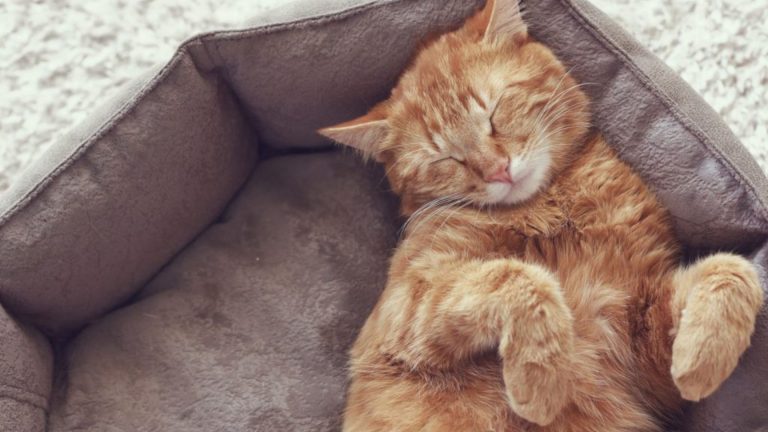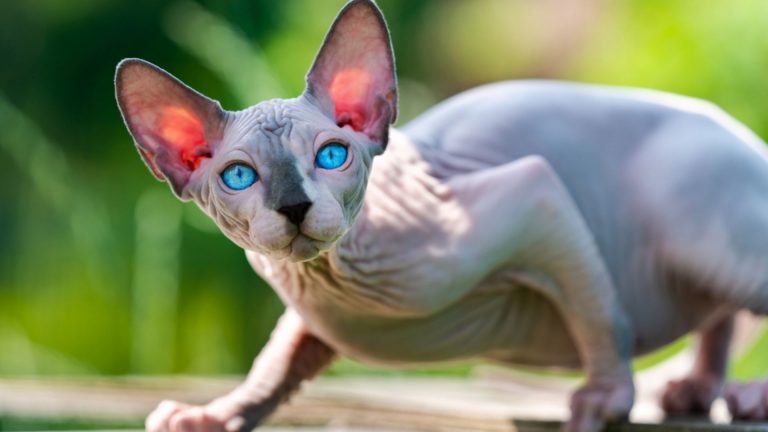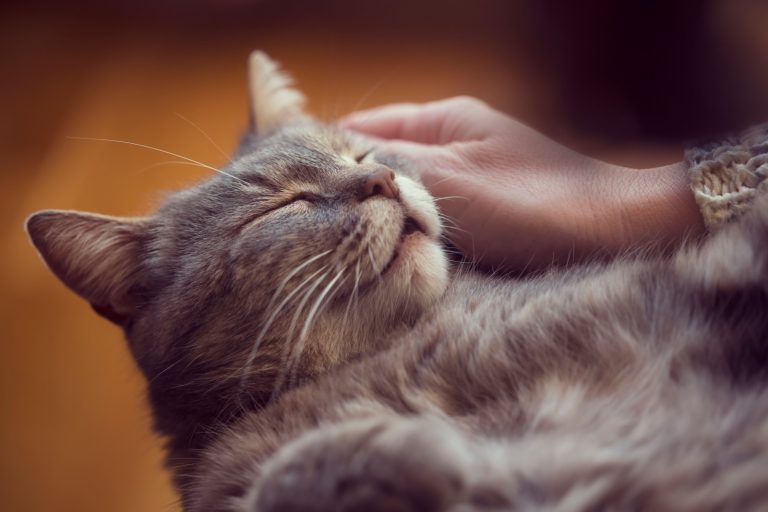Symptoms Of An Ingrown Cat Claw And How To Help
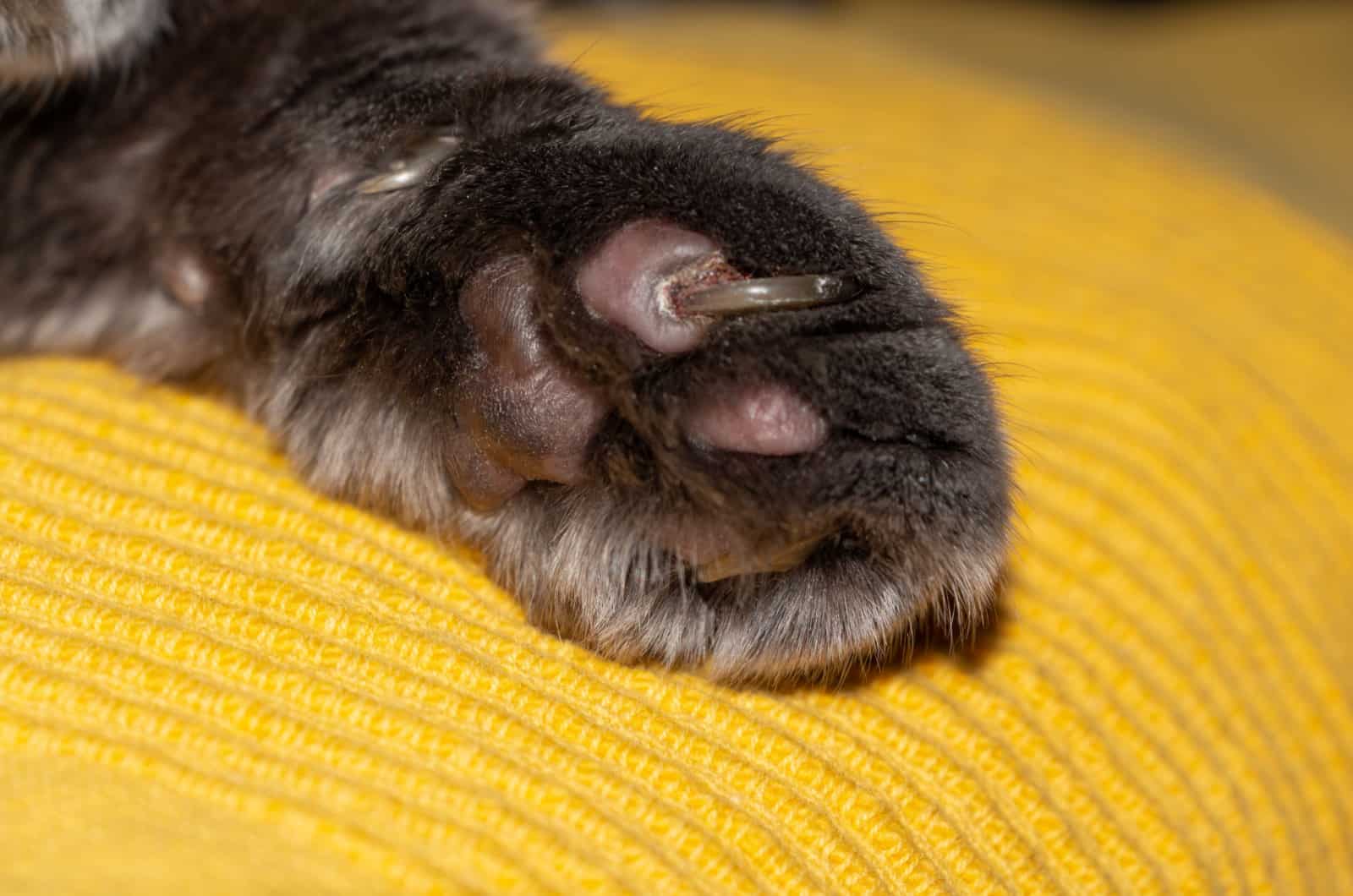
You’ve probably thought about what it’s like when we get ingrown nails, but pet’s nails can also get ingrown. It is irritating and painful, but as we all know, cats won’t show their pain or discomfort to us.
Despite that, ingrown cat claws need to be treated. Luckily, the treatment isn’t complex. However, it is essential because if we don’t treat our cat’s ingrown nails, it can lead to more severe issues.
Continue reading to see why ingrown cat claws occur and what needs to be done to cure them and prevent their recurrence.
Symptoms Of Ingrown Cat Claw
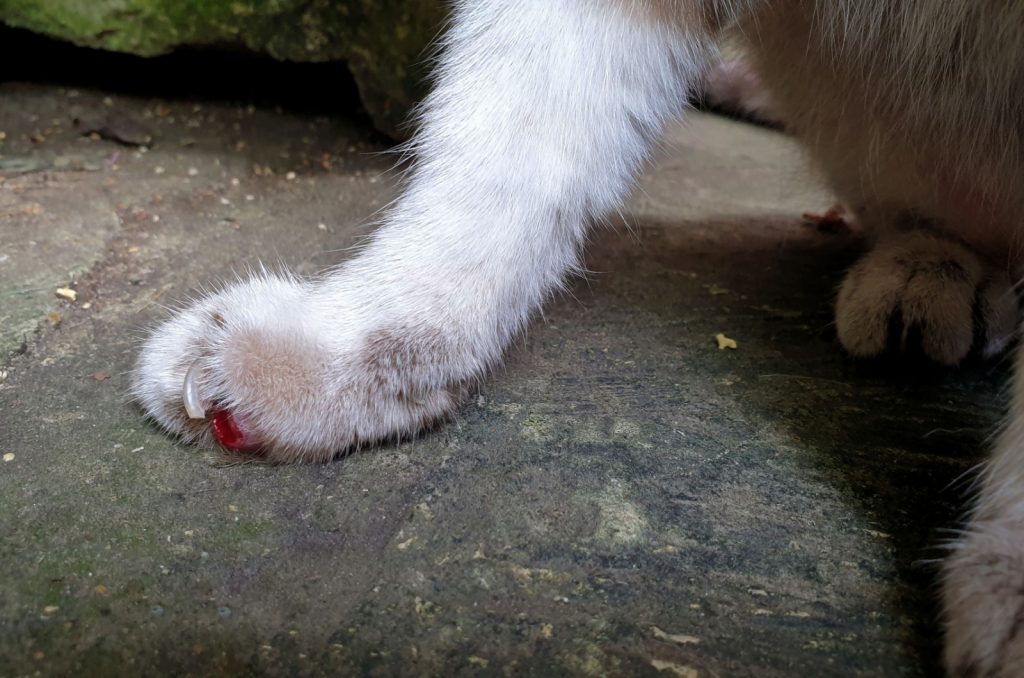
It won’t be hard to notice an ingrown cat claw because it will become very curved, and your cat’s paws will be sore. There is also a possibility that your cat’s paw pads, toes, or its entire foot will be swollen.
Your cat will chew, bite, and lick its affected toe, and you’ll definitely notice it. Another thing that can happen is limping. You may see your cat limping or even bleeding from the paw pad.
What Can Happen If Your Cat Has An Ingrown Claw?
If ingrown cat claws occur, serious infections, inflammations, or even lameness in your cat’s affected foot.
If the ingrown cat claw isn’t adequately treated, it can lead to other severe health issues.
See also: Best Advice For Dealing With Unhealthy Cat Claws
Causes Of Ingrown Claws In Cats
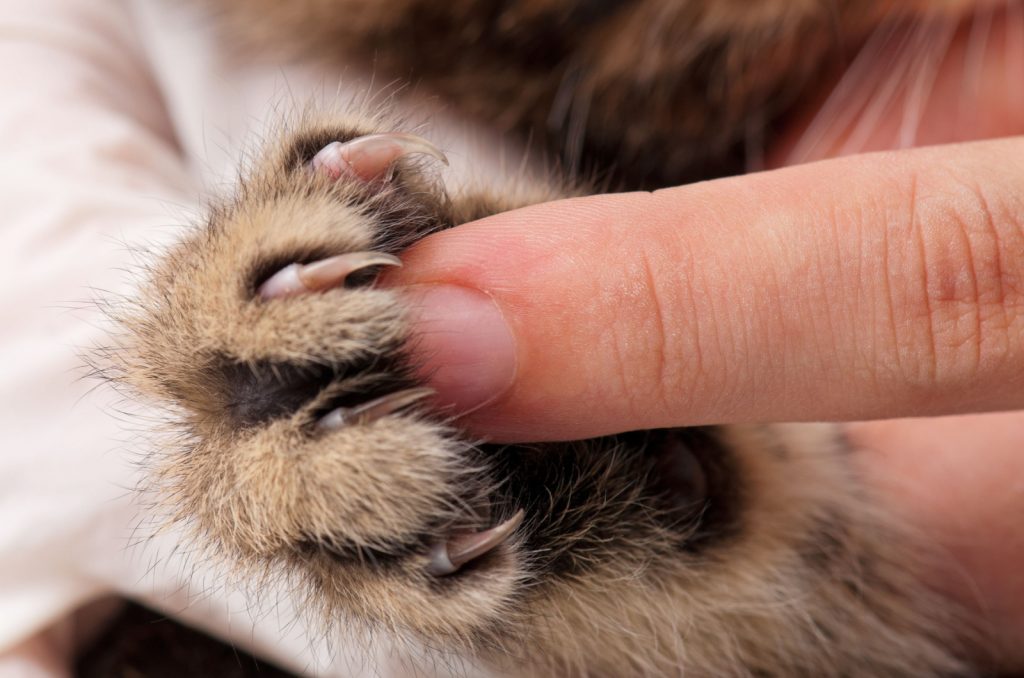
Why do cats get ingrown cat claws in the first place? First, it’s important to note that a cat’s claws are retractable because they are connected to the bones in the toes, i.e. the phalanges.
While your cat is resting, its claws retract inside but can quickly come out if your cat desires. A cat’s paws’ anatomy helps it readily grip and catch its prey and climb trees or high locations around the house. Cat’s nails are sharp-tipped and grow in the shape of a sickle.
Cats can quickly develop overgrown nails, damaging their sensitive skin and leading to ingrown cat claws. Long-haired cats are more predisposed to this as it’s harder to see their claws under the fur.
So Why Does It Happen?
Most usually, ‘dewclaws’ (or claws on extra toes) are the ones that become ingrown. This ‘dewclaw’ is a higher nail that doesn’t touch abrasive surfaces, so it doesn’t wear down like the other nails.
Before a cat’s claw becomes ingrown, it pushes through the cat’s skin which irritates your cat and leads to inflammation. If the nail isn’t trimmed, it bursts through the skin and continues growing within the flesh of the paw.
This is incredibly uncomfortable and irritating. Senior cats are more prone to ingrown cat claws since their claws thicken with age and barely shed their sheaths anymore.
Older cats are also more prone to it than younger cats since they can easily become lazy and don’t bother scratching and shedding the outer layers of their nails.
Prevention Of Ingrown Nails In Cats
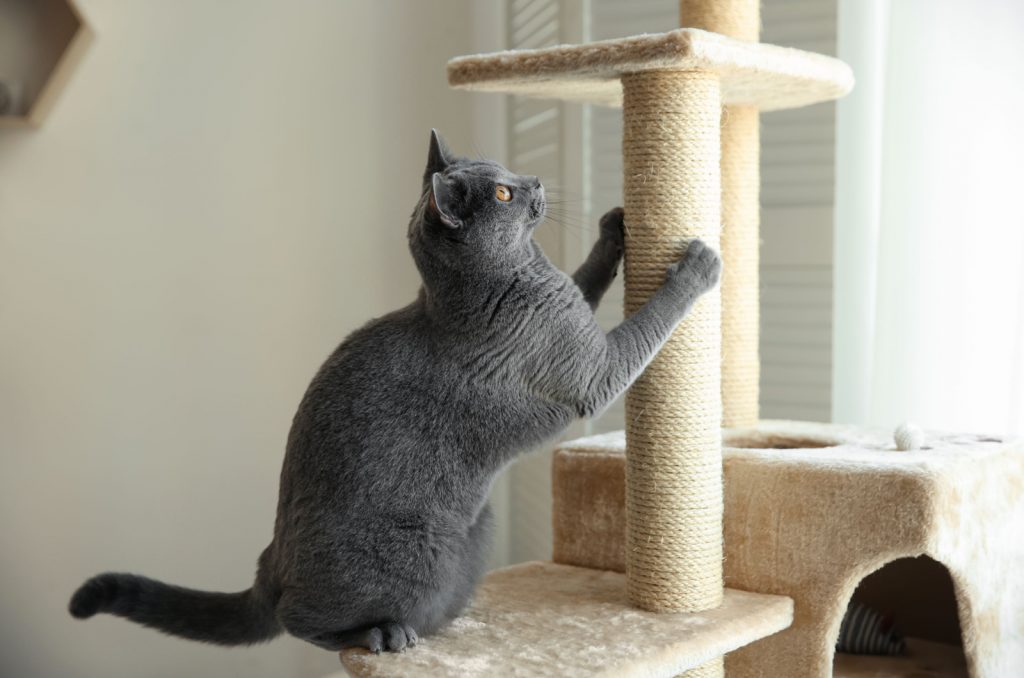
To prevent ingrown cat claws from happening, you should provide your cat with plenty of adequate exercises, different hard surfaces, sisal-covered scratching posts, and carpeted areas to scratch on.
Ingrown cat claws happen to indoor cats more commonly than outdoor ones since they don’t have as many scratching areas as outdoor cats. Scratching is usually sufficient, but as your cat gets older, regular nail trims are necessary.
How often to trim their nails depends on your cat’s breed, age, overall living habits, and nail condition, and it will also depend on your cat’s nail problems.
Perhaps there’s a malformation of your cat’s toes, or they’re not appropriately aligned; declawing might be proposed. However, this rarely happens, and it is most likely that these nails will just have to be trimmed more often.
You should examine your cat’s claws more often so you’ll notice if there’s an ingrown cat claw forming before it becomes a problem. If your cat has long hair, trimming the fur and tufts on its paws will help with early prevention.
Check out: Cat Paw Pad Peeling – Causes And Solutions
What To Do About A Cat’s Ingrown Nail
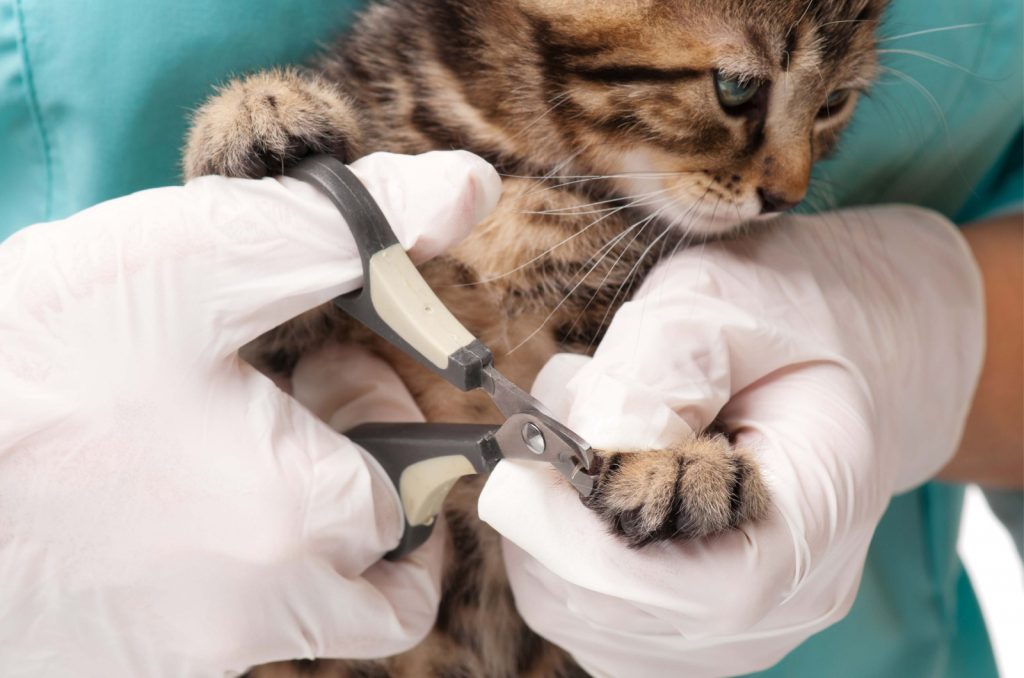
Ingrown claws are often simple to cure, depending on the nail’s length and the wound’s severity in the foot pad. Due to the risk of serious infection and susceptibility to sore paws, I recommend seeing a vet.
Your vet will inspect the ingrown claw, trim it if necessary, clean the wound, and treat any infection that may have occurred. If your cat’s ingrown nail starts to cause discomfort, you may be able to fix the problem at home.
First, hold your cat to examine its claws carefully. Trim any uneven nails immediately above where they enter the cat’s paws with pet nail clippers or human nail clippers.
The tip of the nail may easily fall off the pad or need to be gently taken off with blunt tweezers. You should then wash your cat’s pads with a bar of mild antiseptic soap to reduce the risk of infection.
Continue this wash once or twice a day for several days until the pads heal completely. It’s crucial to continue trimming every few days to stop nail overgrowth until they return to a regular, manageable length.
Veterinary Treatment
Your veterinarian will trim the hair around the affected nail and cut the other nails. Do not touch the affected nail, as it will be uncomfortable and painful for your cat when you clip and remove it from the flesh.
The vet will then wash and clean the wound and remove any dirt. Some cats need their paws bandaged, but this depends on the extent of the ingrown nail.
Your veterinarian may prescribe antibiotics to prevent further infection, but this will depend on your cat’s age and the depth of the ingrown claw.
Your veterinarian may recommend Epsom salt baths at least twice a day to act as a disinfectant after the ingrown nail is removed. Veterinarians also recommend putting large-pelleted litter in the litter box until the wound is fully healed.
And most importantly, your vet will always recommend that you trim your cat’s nails on a regular basis to stop this problem from recurring.
You might be interested in: How To Cure A Cat Broken Toe?
Final Words On Ingrown Cat Claws
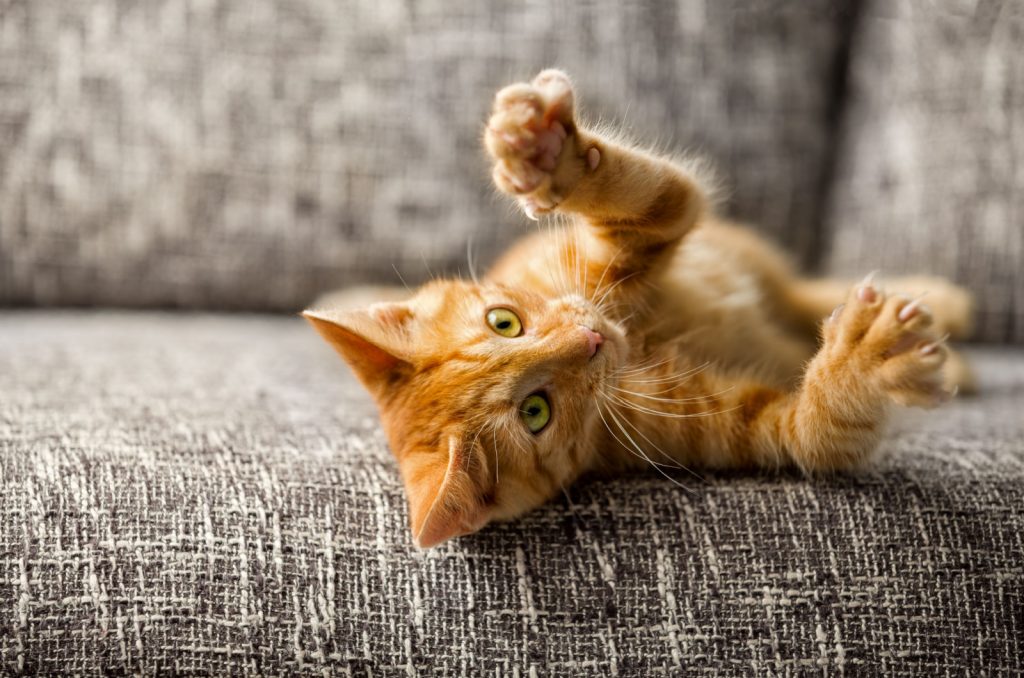
To sum up, if you’re wondering whether your cat has developed an ingrown cat claw, look for these symptoms:
• excessive biting, chewing and licking at toes
• cat’s swollen paw pads
• blood from cat’s foot pad
• excessive sensitivity to touch
• cat’s limping.
Ingrown cat claws are pretty painful and irritating for our feline friends. If you see any of these symptoms or notice an ingrown cat claw forming, you should go to the vet.
Early treatment is essential, so if you notice your cat has an ingrown claw, you should take it to the vet. Especially if it’s the first time and you’re not sure how bad the situation is, and you’ve never done it before.
Your vet is always there to help! So, be a responsible pet parent and take your beloved pet to be treated by the vet. You should also consult them about future treatment and prevention methods.
Related Articles:
Do Horned Paws Hurt Cats And How To Be Sure
Dealing With Overgrown Cat Claws – What You Need To Do
Hard Growth On Cat Paw Pad – What Is It And How To Deal With It?
Like this post? Share or pin it for later!
